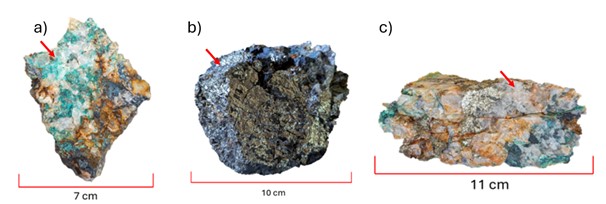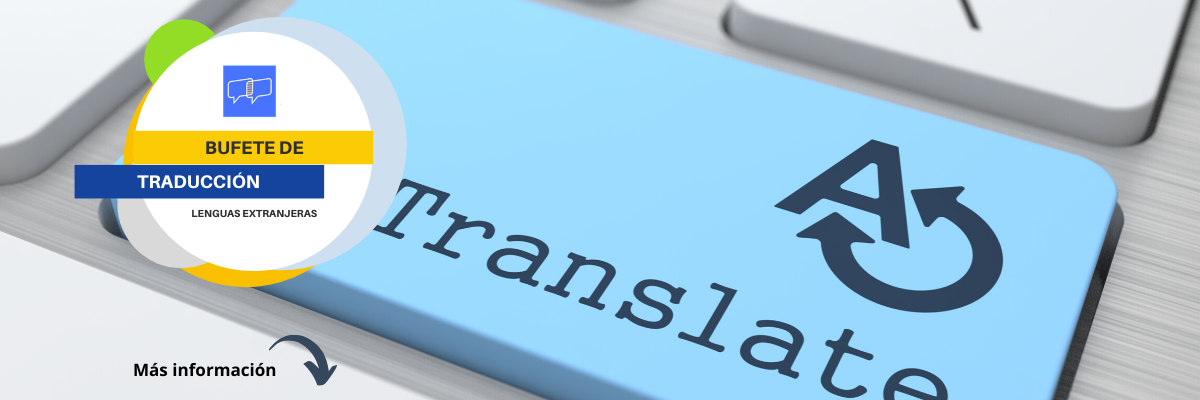Molybdenum Concentration from 3-R Molybdenite through Comminution and Selective Pyrite Separation
DOI:
https://doi.org/10.36790/epistemus.v18i37.378Keywords:
Comminution, Concentration, Copper, MolybdenumAbstract
To achieve a quality molybdenum concentrate, it is crucial to have a high grade prior to flotation. Since the head grade is an uncontrollable variable, it is important to minimize its negative impact. A mineralogical and granulometric analysis of the feed enhances the understanding and improvement of the concentration process. Given indications of the presence of 3-R type molybdenite, the pre-concentration route through comminution is analyzed, which liberates this type of molybdenite from pyrite by studying 4 mineral groups with a different liberation treatment. The characterization is carried out by X-ray diffraction and fluorescence. The comminution model that fits the mineral is Rosin Rammler. The results show an improvement in molybdenum head grade by 0.10% and 3% copper through the separation of pyrite from the rest of the mineral.
Downloads
References
G. Gaulier and S. Zignago, “BACI: International Trade Database at the Product-level of Mo,” 2022. [Online]. Available: http://www.cepii.fr/anglaisgraph/bdd/baci.htm.
US Geological Survey. and Mineral Commodity Summaries, “Copper,” 2023. doi: 10.3133/sir20185160. DOI: https://doi.org/10.3133/sir20185160
Center of collective learning, “OEC ‘Observatorio de complejidad económica,’” Mineral de molibdeno en 2021.
G. Yi, E. Macha, J. Van Dyke, R. Ed Macha, T. McKay, and M. L. Free, “Recent progress on research of molybdenite flotation: A review,” Sep. 01, 2021, Elsevier B.V. doi: 10.1016/j.cis.2021.102466. DOI: https://doi.org/10.1016/j.cis.2021.102466
Giovanni Pedemonte, “Compendio de Mineralogía,” Lima , 2020.
Secretaría de economía, Subsecretaría de minería, and Dirección general de desarrollo minero, “Mina Pánuco, Coahuila México,” Candela Coahuila, 2020. Accessed: Jul. 18, 2024. [Online]. Available: https://www.gob.mx/cms/uploads/attachment/file/500875/P_nuco_Cu__Au__Mo-Coah.pdf
Fuentes Guzmán Edith, Camprubí Cano Antoni, and González Partida Eduardo, “Metalogenia de la mina Pánuco Coahuila México,” Universidad nacional autónoma de México , Ciudad de México, 2016.
Secretaría de economía and Servicio geológico mexicano, “Panorama minero del estado de Coahuila,” 2021. Accessed: Jul. 18, 2024. [Online]. Available: http://www.sgm.gob.mx/pdfs/COAHUILA.pdf
H. Miki, T. Hirajima, Y. Muta, G. P. W. Suyantara, and K. Sasaki, “Effect of sodium sulfite on floatability of chalcopyrite and molybdenite,” Minerals, vol. 8, no. 4, Apr. 2018, doi: 10.3390/min8040172. DOI: https://doi.org/10.3390/min8040172
M. Li, D. Wei, Q. Liu, W. Liu, J. Zheng, and H. Sun, “Flotation separation of copper-molybdenum sulfides using chitosan as a selective depressant,” Miner Eng, vol. 83, pp. 217–222, Nov. 2015, doi: 10.1016/j.mineng.2015.09.013. DOI: https://doi.org/10.1016/j.mineng.2015.09.013
P. Huang, M. Cao, and Q. Liu, “Using chitosan as a selective depressant in the differential flotation of Cu-Pb sulfides,” Int J Miner Process, vol. 106–109, pp. 8–15, May 2012, doi: 10.1016/j.minpro.2012.01.001. DOI: https://doi.org/10.1016/j.minpro.2012.01.001
I. Park, S. Hong, S. Jeon, M. Ito, and N. Hiroyoshi, “A review of recent advances in depression techniques for flotation separation of cu–mo sulfides in porphyry copper deposits,” Sep. 01, 2020, MDPI AG. doi: 10.3390/met10091269. DOI: https://doi.org/10.3390/met10091269
A. Gupta and D. S. Yan, Mineral processing design and operations : an introduction, vol. II. 2016.
T. J. Napier-Munn, S. Morrel, R. D. Morrison, and T. Kojovic, Circuitos de Trituración de Mineral, 2nd ed., vol. II. The univesity of Queensland, 2005.
D. N. Sutherland, “BATCH FLOTATION BEHAVIOUR OF COMPOSITE PARTICLES,” 1989. DOI: https://doi.org/10.1016/0892-6875(89)90004-6
B. A. (Barry A. Wills, Tim. Napier-Munn, B. A. (Barry A. Wills, and Julius Kruttschnitt Mineral Research Centre., Wills’ mineral processing technology. Elsevier/BH, 2006.
J. huai WANG, Q. ru CHEN, Y. li KUANG, A. J. LYNCH, and J. wu ZHUO, “Grinding process within vertical roller mills: experiment and simulation,” Mining Science and Technology, vol. 19, no. 1, pp. 97–101, Jan. 2009, doi: 10.1016/S1674-5264(09)60018-1. DOI: https://doi.org/10.1016/S1674-5264(09)60018-1
R. D. V Subba, Minerals and Coal Process Calculations, Third edition., vol. I. London, U. K: Taylor and Francis Group, 2016.
Servicio geológico mexicano and Sistema Integral sobre Economía Minera (SINEM), “Producción Minera de México del molibdeno,” 2018. [Online]. Available: https://www.gob.mx/
Subsecretaría de minería, Secretaría de economía, and Servicio geológico mexicano, “Panorama Minero del Estado de Sonora Dirección de Operación Geológica,” 2020.
Deepak. Malhotra, Recent advances in mineral processing plant design. SME, 2009.
M. Petrescu, “Theoretical hardness for two anisodesmic minerals: molybdenite and stibnite,” U.P.B. Sci. Bull., Series B, vol. 64, 2002.
C. I. Castellón, N. Toro, E. Gálvez, P. Robles, W. H. Leiva, and R. I. Jeldres, “Froth Flotation of Chalcopyrite/Pyrite Ore: A Critical Review,” Oct. 01, 2022, MDPI. doi: 10.3390/ma15196536. DOI: https://doi.org/10.3390/ma15196536
A. P. Deditius et al., “Trace metal nanoparticles in pyrite,” Ore Geol Rev, vol. 42, no. 1, pp. 32–46, Nov. 2011, doi: 10.1016/j.oregeorev.2011.03.003. DOI: https://doi.org/10.1016/j.oregeorev.2011.03.003
G. C. Ridland, “Mineralogy of the Negus and Con mines, Yellowknife, Northwest Territories, Canada,” Economic Geology, 1941. doi: https://doi.org/10.2113/GSECONGEO.36.1.45. DOI: https://doi.org/10.2113/gsecongeo.36.1.45
S. Castro, A. Lopez-Valdivieso, and J. S. Laskowski, “Review of the flotation of molybdenite. Part I: Surface properties and floatability,” Mar. 10, 2016, Elsevier. doi: 10.1016/j.minpro.2016.01.003. DOI: https://doi.org/10.1016/j.minpro.2016.01.003
R. Mermillod-Blondin et al., “Pyrite Flotation With Xanthate Under Alkaline Conditions-Application to Environmental Desulfurisation.”
C. L. Ciobanu, N. J. Cook, and K. Ehrig, “Ore minerals down to the nanoscale: Cu-(Fe)-sulphides from the iron oxide copper gold deposit at Olympic Dam, South Australia,” Ore Geol Rev, vol. 81, pp. 1218–1235, Mar. 2017, doi: 10.1016/j.oregeorev.2016.08.015. DOI: https://doi.org/10.1016/j.oregeorev.2016.08.015
S. R. Hall and J. M. Stewart, “The Crystal Structure Refinement of Chalcopyrite, CuFeS2*,” 1973. DOI: https://doi.org/10.1107/S0567740873002943
Z. Shu, C. Shen, A. Lu, X. Gu, and Z. Liu, “The crystal structure of bornite cu5 fes4: Ordered fe and split cu,” Crystals (Basel), vol. 11, no. 12, Dec. 2021, doi: 10.3390/cryst11121495. DOI: https://doi.org/10.3390/cryst11121495
N. Poloko, G. Danha, and T. Gaogane, “Processing and characterization of chalcopyrite (CuFeS2) sample from Botswana,” in Procedia Manufacturing, Elsevier B.V., 2019, pp. 488–493. doi: 10.1016/j.promfg.2019.05.070. DOI: https://doi.org/10.1016/j.promfg.2019.05.070
V. Pandurang Dhawale, “Synthesis and Characterization of Aluminium Oxide (Al<sub>2</sub>O<sub>3</sub>) Nanoparticles and its Application in Azodye Decolourisation,” International Journal of Environmental Chemistry, vol. 2, no. 1, p. 10, 2018, doi: 10.11648/j.ijec.20180201.13. DOI: https://doi.org/10.11648/j.ijec.20180201.13
G. Chávez Cabello, “Deformación y magmatismo cenozoicos en el sur de la cuenca de Sabinas, Coahuila, México,” Universidad Nacional Autónoma de México, Cuidad de México, 2005.
M. F. Barreto Oliveira, M. R. Fonseca Gontijo, C. Parreiras Teles, and F. F. Araujo, “Characterization of Portlant cement mortars using x-ray diffraction (XRD) and X-ray fluorescence (XRF): ettringite, portlandite and hydrated calcium silicate (CSH),” Revista de Gestao e Secretariado, vol. 15, 2024, doi: http://doi.org/10.7769/gesec.v15i7.3997. DOI: https://doi.org/10.7769/gesec.v15i7.3994
C. Villanova-De-Benavent, J. A. Proenza, S. Galí, E. Tauler, J. F. Lewis, and F. Longo, “Talc-and serpentine-like ‘garnierites’ in the Falcondo Ni-laterite deposit, Dominican Republic,” Barcelona, 2011.
L. S. Kao et al., “A C/MoS2 mixed-layer phase (MoSC) occurring in metalliferous black shales from Southern China, and new data on jordisite,” American Mineralogist, vol. 86, no. 7–8, pp. 852–861, 2001, doi: 10.2138/am-2001-0708. DOI: https://doi.org/10.2138/am-2001-0708
T. A. Lasheen, M. E. El-Ahmady, H. B. Hassib, and A. S. Helal, “Molybdenum metallurgy review: Hydrometallurgical routes to recovery of molybdenum from ores and mineral raw materials,” May 04, 2015, Bellwether Publishing, Ltd. doi: 10.1080/08827508.2013.868347. DOI: https://doi.org/10.1080/08827508.2013.868347
D. José Vergara Solervicens and A. Dondero Carrillo Lorena Álvarez Sánchez, “ANÁLISIS DEL COMPORTAMIENTO DE LA MOLIBDENITA EN MINERAL DE RAJO Y SUBTERRÁNEO DE DAND,” Valparaiso, 2012.
J. E. Sepulveda and L. Gutierrez, Dimensionamiento y optimización de plantas, 3rd ed., vol. I. Santiago de Chile: Centro de investigación minera y metalúrgica, 1986.
M. Hennig and U. Teipel, “Grade efficiency for sieve classification processes,” Canadian Journal of Chemical Engineering, vol. 96, no. 1, pp. 259–264, Jul. 2018, doi: 10.1002/cjce.22910. DOI: https://doi.org/10.1002/cjce.22910
A. Bahrami, M. Abdollahi, M. Mirmohammadi, F. Kazemi, A. Danesh, and M. Shokrzadeh, “A process mineralogy approach to study the efficiency of milling of molybdenite circuit processing,” Sci Rep, vol. 10, no. 1, Dec. 2020, doi: 10.1038/s41598-020-78337-8. DOI: https://doi.org/10.1038/s41598-020-78337-8
R. P. King, C. L. Schneider, and E. A. King, Modeling and simulation of mineral processing systems. Society for Mining, Metallurgy, and Exploration, 2012.
H. Shalchian et al., “On the mechanism of molybdenite exfoliation during mechanical milling,” Ceram Int, vol. 43, no. 15, pp. 12957–12967, Oct. 2017, doi: 10.1016/j.ceramint.2017.06.194. DOI: https://doi.org/10.1016/j.ceramint.2017.06.194
A. Macías-García, E. M. Cuerda-Correa, and M. A. Díaz-Díez, “Application of the Rosin-Rammler and Gates-Gaudin-Schuhmann models to the particle size distribution analysis of agglomerated cork,” Mater Charact, vol. 52, no. 2, pp. 159–164, May 2004, doi: 10.1016/j.matchar.2004.04.007. DOI: https://doi.org/10.1016/j.matchar.2004.04.007
H. Gutierrez Pulido and R. De la Vara Salazar, Análisis y diseño de experimentos, II. Ciudad de México: McGraw-Hill Interamericana, 2008.
Ibarra. J. A. Jerez, “Análisis de liberación mineral a partir de modelamiento de fractura no aleatorio,” Repositorio académico de la Universidad de Chile, Aug. 2023.
Vadillo. Y. A. Guerra and Baldoceda. E. J. Mayorca, “Caracterización mineralógica de la calcopirita y su impacto en la producción de concentrados de cobre en Minera Estefany S. A. A.,” Universidad Nacional “Daniel Alcides Carrión,” Cerro de Pasco Perú, 2019.
A. Romero, S. Flores, and W. Arevalo, “Análisis granulométrico para la producción industrial del cobre a partir de la calcopirita,” Revista de la facultad de ingeniería industrial, vol. 12, no. 2, pp. 21–26, Nov. 2009, [Online]. Available: http://www.redalyc.org/articulo.oa?id=81620150003
A. M. Teja-Ruiz et al., “Caracterización de residuos mineros del estado de baja california sur para el estudio de recuperación de metales base,” Tópicos de investigación en ciencias de la tierra y materiales, vol. 4, 2017. DOI: https://doi.org/10.29057/aactm.v4i4.9398

Downloads
Published
How to Cite
Issue
Section
License
Copyright (c) 2025 EPISTEMUS

This work is licensed under a Creative Commons Attribution-NonCommercial-ShareAlike 4.0 International License.
The magazine acquires the patrimonial rights of the articles only for diffusion without any purpose of profit, without diminishing the own rights of authorship.
The authors are the legitimate owners of the intellectual property rights of their respective articles, and in such quality, by sending their texts they express their desire to collaborate with the Epistemus Magazine, published biannually by the University of Sonora.
Therefore, freely, voluntarily and free of charge, once accepted the article for publication, they give their rights to the University of Sonora for the University of Sonora to edit, publish, distribute and make available through intranets, Internet or CD said work, without any limitation of form or time, as long as it is non-profit and with the express obligation to respect and mention the credit that corresponds to the authors in any use that is made of it.
It is understood that this authorization is not an assignment or transmission of any of your economic rights in favor of the said institution. The University of Sonora guarantees the right to reproduce the contribution by any means in which you are the author, subject to the credit being granted corresponding to the original publication of the contribution in Epistemus.
Unless otherwise indicated, all the contents of the electronic edition are distributed under a license for use and Creative Commons — Attribution-NonCommercial-ShareAlike 4.0 International — (CC BY-NC-SA 4.0) You can consult here the informative version and the legal text of the license. This circumstance must be expressly stated in this way when necessary.
The names and email addresses entered in this journal will be used exclusively for the purposes established in it and will not be provided to third parties or for their use for other purposes.














